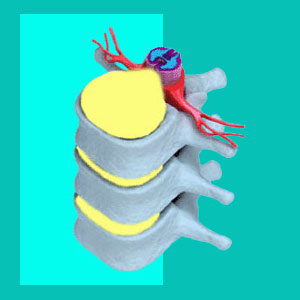
A herniated disc impinging on the thecal sac is an extremely common terminology used on MRI reports and other forms of diagnostic radiology evaluations. The condition may also be noted as a bulging disc encroaching on the thecal sac or a herniated disc indenting the thecal sac.
The majority of affected patients have no idea what the condition entails, nor do they even understand what the thecal sac is. Additionally, doctors frequently make little, if any, effort to adequately explain the structural findings, which is why so many patients need help deciphering their MRI reports.
Worse still, are the doctors who exploit the ignorance of their patients to coerce them into long-term and highly profitable treatment, or unneeded surgery, virtually always for conditions which are clearly not even the real source of suspected herniated disc symptoms.
This discussion will provide detailed information on thecal sac impingement and its possible consequences. We will also examine why this diagnosis is such as enigma to affected patients.
Herniated Disc Impinging on the Thecal Sac Facts
The thecal sac is simply a membrane which surrounds the spinal cord and spinal nerves. It is filled with cerebral spinal fluid and acts as a protective barrier for sensitive nerve tissue. Herniated discs which contact, encroach upon or compress the thecal sac alone, mean absolutely nothing in most cases. It is like gently placing a finger against the side of a water balloon. No damage likely to be done here.
Now, if the disc is under tremendous pressure, it may affect deeper tissues inside the actual thecal sac, such as compressing the spinal cord itself or any of the spinal nerve roots. These can be problematic occurrences in most cases, but not all.
Herniated Disc Thecal Sac Impingement
Virtually any significantly sized posterior herniation will efface or impinge upon the thecal sac. Central disc protrusions will often herniate directly into the middle of the sac, possibly affecting the spinal cord if they penetrate deeply enough.
Meanwhile, posterolateral herniated discs will efface the side of the thecal sac, rarely affecting the cord, but possibly affecting the nerve roots which exit at the side of each vertebral level.
Just remember that although thecal sac effacement is extremely common, the chances of the disc being the sole or primary source of chronic back pain are slim. It can certainly happen, but herniated discs are mistakenly blamed for causing enduring pain far more than they actually do.
Herniated Disc Impinging on the Thecal Sac Evaluation
If you are frightened by the terminology used on your MRI study, then do not suffer alone and in silence. Call your doctor and demand an explanation of the terms used and the extent of the condition. I recommend getting them to put their words in writing, since this will bind them to their diagnosis and make them think carefully before recommending any drastic treatment or long-term care.
Litigation is a very real risk for doctors and making them consider the possibility that we patients are not as dumb as they think might be one of the best ways of preventing misdiagnosed herniated disc pain. Additionally, never be intimidated or brushed off by your doctor. Demand quality care and a complete detailed picture of your condition, and once again, have them put it in writing. I am sure you will see a big difference in recommendations and how you are treated once accountability has been increased for their actions.
Either that or they will refuse to deal with you at all, which is a very telling statement as to the quality of doctor they really are. In these cases, they are doing you a favor. Just find a better physician. You will be better off in the long run.
Herniated Disc > Herniated Disc Diagnosis > Herniated Disc Impinging on the Thecal Sac




